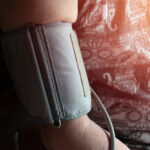Discover the fascinating development of how we’ve come to understand one of the most critical health indicators – blood pressure. Our latest article, Normal Blood Pressure: Why 120/80, History, How to Maintain, delves into the intriguing evolution this concept. What we consider ‘normal’ blood pressure? And why it’s so crucial for our bodies’ proper functioning.
Did you know that the definition of normal blood pressure has changed significantly over time? As of 2023, the American Heart Association defines normal blood pressure as less than 120/80 mm Hg. This is a significant shift from previous guidelines. The old version set the threshold at 140/90 mm Hg for people younger than 65. And 150/80 mm Hg for those aged 65 and older. This change is not arbitrary but is influenced by a wealth of research and clinical trials.
Our article takes you on a historical journey. It traces the evolution of blood pressure guidelines from the 1970s to the present. You’ll learn who defined blood pressure categories and how the term “prehypertension” was introduced. We also discuss the significant changes made by the American Heart Association and the American College of Cardiology in 2017, and the European Society of Cardiology/European Society of Hypertension‘s recommendations in 2018.
We also delve into the complexities of managing hypertension in older adults, considering factors like orthostatic hypotension, vascular compliance, and the risk of drug interactions. Plus, we provide practical tips on how to maintain normal blood pressure, from regular physical activity and a healthy diet to regular monitoring and medication adherence.
Five facts about normal blood pressure that few know
- First Blood Pressure Measurement: The first blood pressure measurement was taken in 1733 by Reverend Stephen Hales, who inserted a tube into a horse’s artery and measured how high the blood rose in the tube.
- White Coat Hypertension: Some people may experience a phenomenon known as “white coat hypertension,” where their blood pressure rises in a medical setting due to anxiety but is normal at home.
- Dippers and Non-Dippers: People’s blood pressure typically drops (dips) during sleep. However, in some people, this dip doesn’t occur, and they are referred to as “non-dippers.” Non-dippers are at a higher risk of cardiovascular events.
- Effects of Weather: Changes in weather can affect blood pressure. Cold weather can cause blood vessels to narrow, which can increase blood pressure. On the other hand, hot weather can cause blood vessels to expand, which can lead to lower blood pressure.
- Cuff Size Matters: The size of the cuff used during a blood pressure reading can significantly impact the accuracy of the measurement. If the cuff is too small, it can overestimate blood pressure, and if it’s too large, it can underestimate it.





